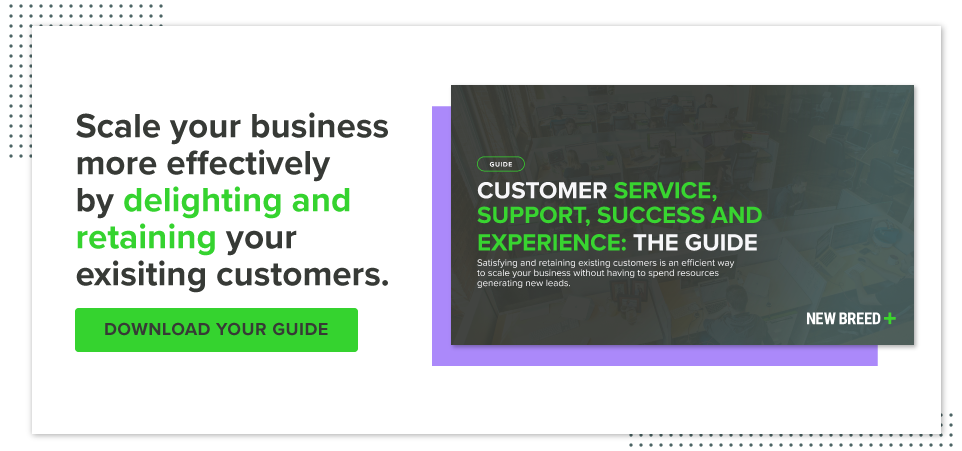What is Customer Marketing?

As prospects progress through the buyer’s journey, it’s marketing’s job to send them informative, contextual materials that enable them to better understand the challenge they’re facing and how your company can help.
Marketing shouldn’t stop once a prospect closes as a customer. However, the same communications you were sending to help guide a contact down the funnel aren’t necessarily appropriate once a deal has been signed.
What is Customer Marketing?
Customer marketing is a set of strategies and tactics aimed at your customer base in order to grow your company through acquisition, retention and expansion.
Acquisition
Customer acquisition is less commonly associated with customer marketing, but effective customer marketing engenders loyalty and advocacy which can lead to referral business, both from your customers recommending you to their peers and from evangelists introducing you to new companies as they switch jobs.
“Especially with B2B, there’s marketing to the account or company and then there’s marketing to the individual. The individual is who really becomes the evangelist,” says Client Experience Lead Karin Krisher. “In terms of the flywheel, people may exit the flywheel at one company but stay in it in terms of their relationship to you as they transfer to another.”
So, your customer marketing efforts should be aimed at both the individuals you work with and their account as a whole.
“You always have two sets of goals. You want to market for the retention and expansion within an account, but you also want to retain the individual, which is to say, acquire them again elsewhere,” Karin says.
Positive customer experiences can also result in word-of-mouth marketing and provide you with references, testimonials and case studies that you can use in your acquisition marketing efforts.
Retention
“The customer marketing aspect of [retention] is pretty highly dependent on personalization,” Karin says.
While you can keep sending your customers general marketing content like blogs, webinars and long-form offers that attracted them to your company in the first place, that’s not customer marketing.
Customer marketing is more than just a set of materials that you send to customers. Your customer marketing tactics should be highly personalized, take into account the products customers are using and help them grow their understanding of those products and how to use them.
By enabling your customers to get more value out of your products, you’re inspiring loyalty.
Knowledge bases, FAQs and help centers are components you can use to do that. But on top of providing answers to the questions they have, you also want to expose them to aspects of your offerings that they’re unfamiliar with and increase their perceived value of your product.
“You want them to have greater value at all times and continue to find new value in [your product] without even purchasing more,” Karin says.
Expansion
Similar to the customer marketing tactics that you use to garner retention, to encourage expansion you start by showing customers ways they can get more value from your product.
Once they maximize the benefits they’re seeing from their current products, then you can highlight the advantages they’d see from upgrading to a higher tier or using some of your other products too.
Your expansion strategy should be informed by the needs and behavior of each individual customer in addition to the success you’ve seen with customers in the past. What characteristics make a customer a good fit to expand? What triggers indicate they’re ready to upgrade or purchase additional products?
“The way I think of this is sort of like a map. You have to know what the best path is in order to point them to it, and that’s what customer marketing for expansion looks like,” Karin says. “It’s knowing what that path looks like and structuring it in a way that you can guide the customer along it with ease.”
How Customer Marketing Differs from Acquisition Marketing
Customer marketing can and should be much more personalized than your acquisition marketing.
“Ideally you know your customers better because you have more fingers on their behavior,” Karin says.
The principles are the same, you want to be sending contextually-relevant communications that help address a pain point, but you have a lot more data to work with. By the time someone has closed as a customer, they’ve explicitly told you what challenge they’re trying to solve; you don’t have to infer from their behavior. Plus you can see how they leverage with your product or service.
“The way that they’re different is just that you have more opportunities to tap them for that information and then synthesize it and use it,” Karin says. “You want that for your entire total addressable market, but that target is a lot wider.”
Not only do you know more about your customers than you do prospects, but also, your customers know more about you. They are familiar with your company and have some brand affinity already. You don’t have to introduce yourself anymore and can focus on solving their challenges.
That brand affinity does come with higher expectations though. Some of the broader communications that are OK for prospects aren’t appropriate for your customers. Targeted, personalized communications can improve their experience with your brand, but talking to them as if they’re strangers can damage your relationship.
Quinn Kanner
Quinn is a writer and copyeditor whose work ranges from journalism to travel writing to inbound marketing content.





